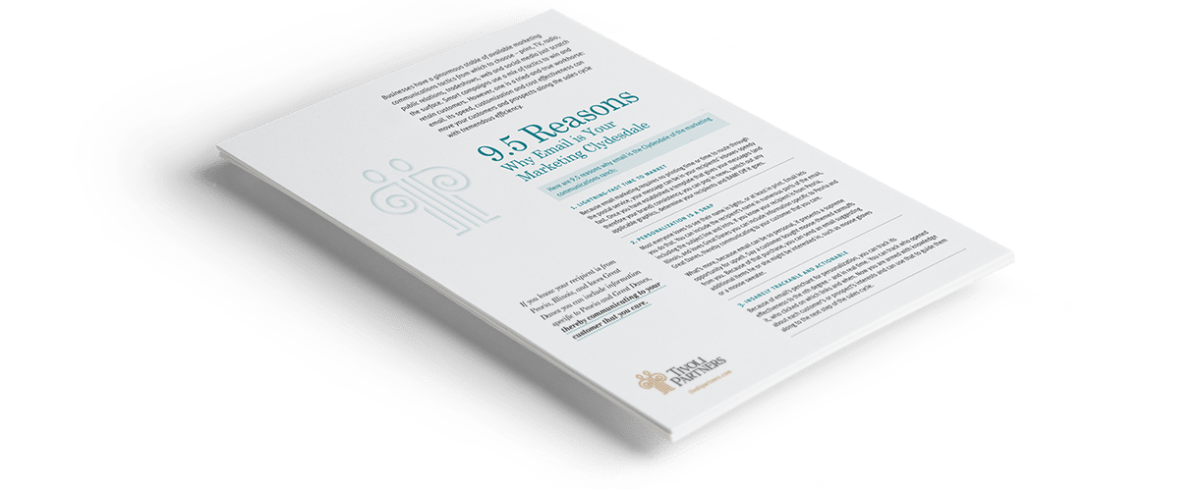“If you build it, they will come,” is a swell line for a blockbuster movie, but it really doesn’t fly in the business world. In our competitive environment, you need to know your target customers inside and out and then craft your lifecycle marketing strategies around them. To do this, create a bang-up customer profile. Here are 3 easy steps for building one.
First, some smart definitions to have in your back pocket:
- Demographics are tangible, quantifiable elements: age, gender, ethnicity, education, income, employment, etc.
- Psychographics are the intangibles, including personality traits, values, opinions, attitudes, interests, hobbies, and lifestyles.
- Purchase behaviors give clues into the who, what, when, where, why and how of purchase choices.
Step 1: Who are your existing peeps?
Take a good look at your current address book. (If your product or service is brand new, skip ahead to step 2.) Who are the people who buy your products now? What are their demographics, psychographics and purchase behaviors?
Ask them why they originally started doing business with you and why they still do. What does your company have that others don’t? These questions will help you determine what motivates them to be loyal, also known as a WIIFM (“What’s in it for me?”).
Also learn where they go for information: friends, family, Internet search, catalogs, etc.
While you’re at it, keep in mind choosers vs. users. For example, if you sell princess-themed pogo sticks, the end users are young girls, but it’s the parents (or grandma who can leave and doesn’t have to listen to the incessant boing, boing, boing) who ultimately choose and buy them. Appeal to both.
Step 2: Who are your ideal customer types?
Define the types of customers who are the best fit for your product — in this case, let’s say a swanky, high-end camping tent. Using demographics, psychographics and behaviors, lay out the elements in this handy chart:
Demographics
| Customer A | Customer B | |
|---|---|---|
| Age | 26 | 50 |
| Gender | Male | Female |
| Education level | Bachelor’s degree | Graduate degree |
| Household Income | $80K | $250K |
| Geographic location | Pacific Northwest | South |
| Marital status | Married | Single |
| Number of children | 2 | None |
| Profession | IT | Attorney |
Psychographics
| Customer A | Customer B | |
|---|---|---|
| Conformist or experimental? | Experimental | Conformist |
| Family focused or flying solo? | Family | Flying solo |
| Early adopter or follower? | Early adopter | Follower |
| Hobbies/sports/ free time | Camping, hiking, outdoors | Camping, fly-fishing, dinner out with friends |
| Media preferences | Heavy Internet user, watches movies on Netflix, TV on Hulu, no cable TV, does not read print publications, books on Kindle | Reads paper newspapers, magazines and books; watches cable TV; uses Internet, but not main media channel |
| Influencers | Friends and family, research on Internet | Friends and family |
Purchase Behavior
| Customer A | Customer B | |
|---|---|---|
| Price | Important | Not important |
| Quality | Very Important | Very important |
| Brand name recognition | Important because of quality | Not important |
| Customer service | Important | Very important |
| Variety of services | Not important | Not important |
| Discounts and sales | Important | Not important |
| Attractiveness of packaging | Not important | Not important |
| Convenience of store location | Not important | Important |
| Store appearance | Not important | Important |
| Convenience of product use | Important | Important |
| Guarantees or warranties | Important | Important |
| Technical support | Important | Important |
| Flexible payment terms | Not important | Not important |
Step 3: Create customer profile.
If you had an imaginary friend as a kid, this exercise will be right up your alley. To best understand your ideal customers, create one.
Let’s use customer A to create a customer persona. Meet Ted. Ted just moved to Seattle with his wife Maria and two young children. They are excited to explore their new region and feel that camping is a great way to do it. They have both camped before, but always in old, yucky, college-era tents, and they want something better for their young family. This is a big investment for them, so they need to make sure the tent they get is quality and going to last. He and Maria ask friends and family for recommendations and then scour the (almost entire) Internet for reviews and ratings. Since they will likely order online, a mega-awesome website with loads of photos, details, reviews, and online assistance chat is essential.
If you really want to get to know Ted like a bro, include details like his favorite websites, books, movies, music, food, beverage, restaurant, grocery store, place for clothes, brands, vacation spot, ways to relax. You can also fill it out with info about his siblings, BFFs, worries, dreams, and top values.
Now, draw a photo of Ted and post on your wall. (It may feel creepy, but it’s not. Seriously.) If you draw like your two-year-old nephew, find a stock photo or photo in a magazine. Creating a visual of this ideal customer profile is very important.
Onward and upward
Now that you know Ted, you can more easily speak to him (and other prospects and customers like him) using a messaging platform that resonates with him through media outlets he prefers. You can also see where Ted is on the customer lifecycle continuum in our related article.


